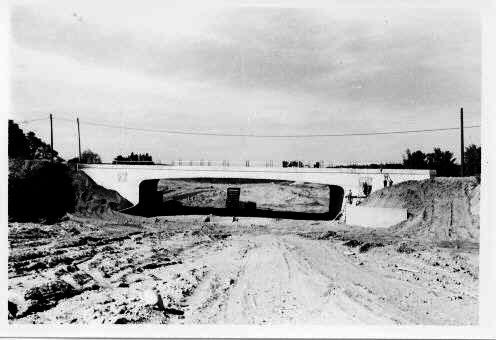A highway doesn’t define a community, but it might contribute to it.
Highway 400 has been making Barrie accessible for decades: think cottagers, commuters and Barrie residents making their way around their own town.
Drivers have been laying a lot of rubber on that roadway for almost 70 years and it won’t be long before those six lanes grow to 10.
When the final stretch through Barrie was completed in 1952, it was anticipated to be a gateway to Ontario’s northland and to minimize increasingly frustrating traffic chaos in the town (as Barrie was known then) on weekends.
As early as 1934 — when automobiles were becoming more popular and accessible — there were thoughts of a Barrie "bypass," according to local historian Brad Rudachyk, co-author of the book Beautiful Barrie The City and Its People.
At times during the 1930s and ‘40s, between Toronto and Barrie cars were stopped in long lines, some of them two-and-a-half miles in length, Rudachyk says.
“It was bumper to bumper, going back to the 1930s and even to the 1920s when cars were taking off. There was a huge amount of traffic and it was a huge headache,” he says. “By ’44, they were talking about the 60-mile dual highway (from Toronto to Barrie) similar to the Queen Elizabeth Way at a cost of about $5 million, which was a lot of money back in the day.
“By actual account on (a long weekend) Monday night, it required 35 minutes to travel two miles from the eastern limits (of Barrie) to the post office (downtown). That was the bottleneck and it was absolutely crazy.”
According to the King's Highway 400 website, construction began on the new highway in 1946, when a series of grading contracts were awarded to construct the divided highway for a distance of 46 miles (74 kilometres), from Wilson Avenue in North York Township northerly to Highway 27 (Essa Road) south of Barrie.
"Most bridges designed for the new Toronto-Barrie Highway featured the Ontario coat-of-arms embossed into both sides of the bridge's fascia," the website states. "Due to post-war shortages of structural steel, many of the bridges along the highway sat incomplete for several years. The new Toronto-Barrie Highway was legally designated as a Controlled-Access Highway (CAH) in 1948. At the time of its designation, the Toronto-Barrie Highway was the longest CAH in Ontario."
During the 1960s, ’70s — and for decades later — the 400 would creep farther and farther north towards Parry Sound and replacing Highway 69, what some travellers referred to as ‘Runway 69’ because of its high traffic volume during busy weekends and with paved shoulders that allowed drivers to pull over to let impatient motorists pass.
That would seem like a convenience until a turn in the road would reveal a slower vehicle on the shoulder, a car in the proper lane being passed by a speeder passing in the oncoming lane, occasionally forcing a vehicle approaching in that oncoming lane to veer onto the shoulder, something this reporter has witnessed numerous times.
Now Highway 400 extends past Parry Sound, making cottage commutes less miserable.
But changes are coming to the roadway through Barrie, as anyone who makes a trip to Toronto might guess as they see new bridges and interchange work. Bridges to accommodate the wider highway have already been constructed: King Road, Highway 9, Bradford West Gwillimbury Line 5, Innisfil Line 4 (Innisfil Line 6 is nearing completion) MacKay Road in the south end and work is continuing at Tiffin Street and the Harvie Road/Big Bay Point bridge. When the bridge over Mapleview Drive was constructed years ago, the widening was taken into account.
It won’t be long until those six lanes expand to 10 through Barrie.
The recommended plan from the Ministry of Transportation (MTO) 2017 Transportation Environmental Study Report states that from one kilometre south of Highway 89 to Highway 11 (or ‘The Split’, as it is known locally) changes will include a 10-lane cross-section with four general purpose lanes on either side along with one high-occupancy vehicle lane in each direction, transitioning at the north end to eight general purpose lanes prior to the junction at Highway 11.
Despite all the bridge work, a timeframe for construction of a widened of Highway 400 through Barrie isn’t set in stone.
“Working through urbanized areas such as Barrie can present a number of challenges, including constrained property limits and numerous utilities located within or adjacent to the highway corridor,” says MTO spokesman Jacob Ginger.
For all 400-series highway work, "the ministry works closely with nearby municipalities to reduce disruptions to businesses and residents," Ginger adds. "A few of the ways we do this is by minimizing lane closures during peak periods, co-ordinating our work with municipal road improvements and focusing work during off-peak periods.



